Product News
2021/12/13
CCTV in Beijing, which this year rolled out a mobile AoIP Dante-based EFP production system
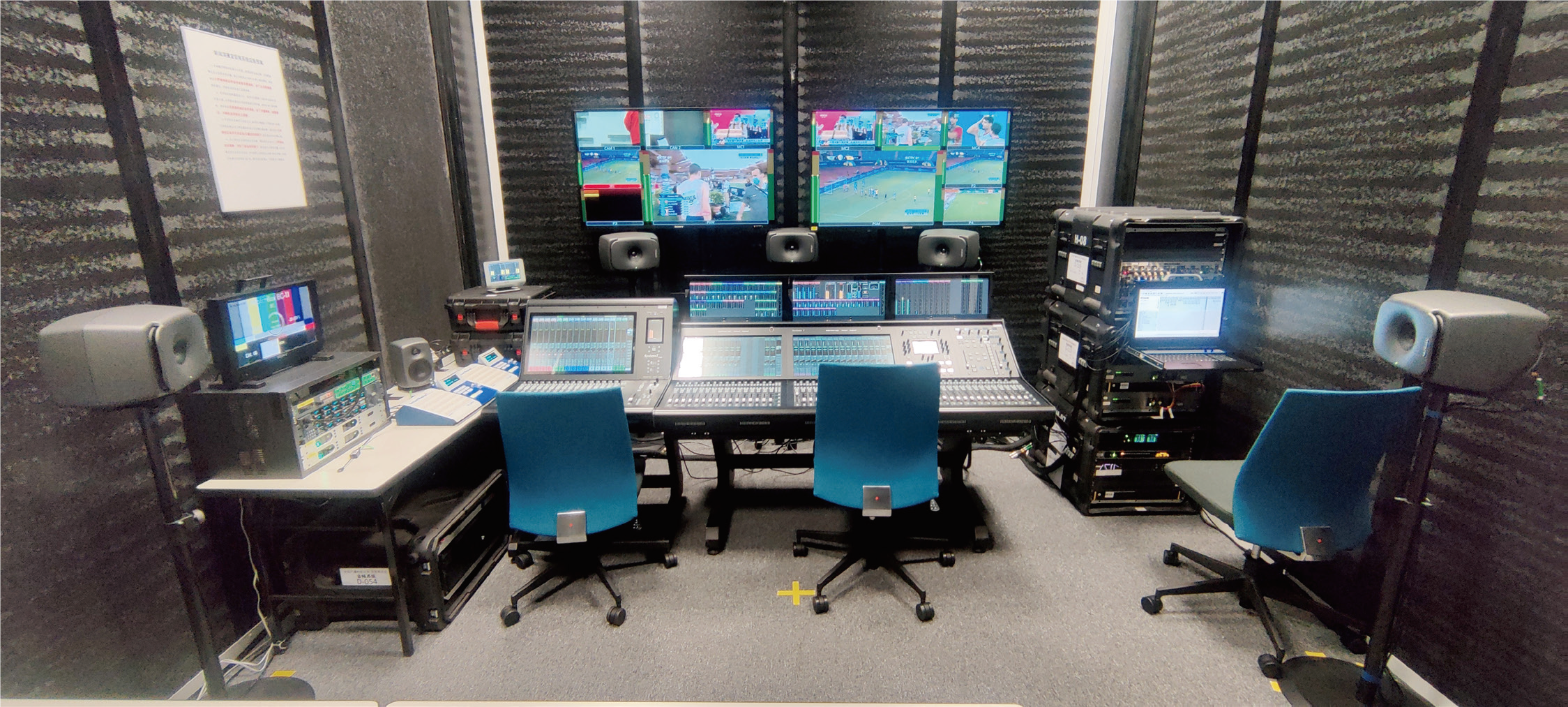
Back in 2017, the China Media Group – the holding company for national broadcaster CCTV – began to gradually implement full AoIP audio production. After gaining sufficient experience, the group initiated a project to build a mobile Ultra HD video and audio EFP (electronic field production) system for variety shows, which would give it the ability to produce programmes in 3D sound. This would also meet the requirements of large-scale shows and sporting events, as well as adapting to the eventual production and broadcasting in Ultra HD 4K/8K for large-scale variety shows in the field.
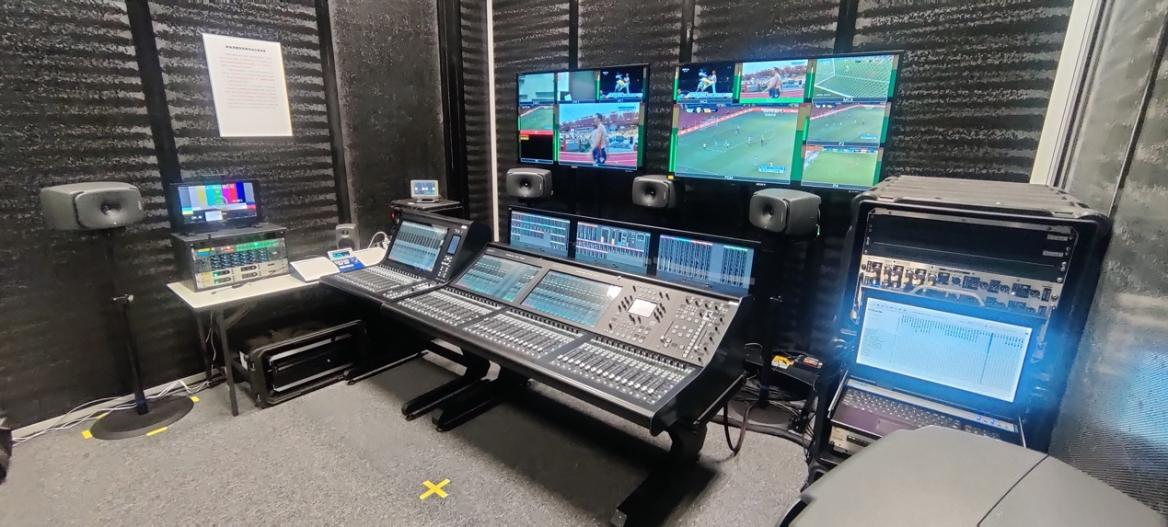
The tender was won by Digital Media Technology (DMT), which provided a portable Dante AoIP solution with Solid State Logic’s System T platform as the core. The system was integrated and delivered in 2020 and is entirely IP-based, from video to audio and control to monitoring. Throughout this year, it has been put to use for major events such as the Tokyo 2020 Olympic Games, the 2021 Spring Festival Gala (8K version) and the 100th anniversary of the Communist Party of China in Tiananmen Square (8K version).
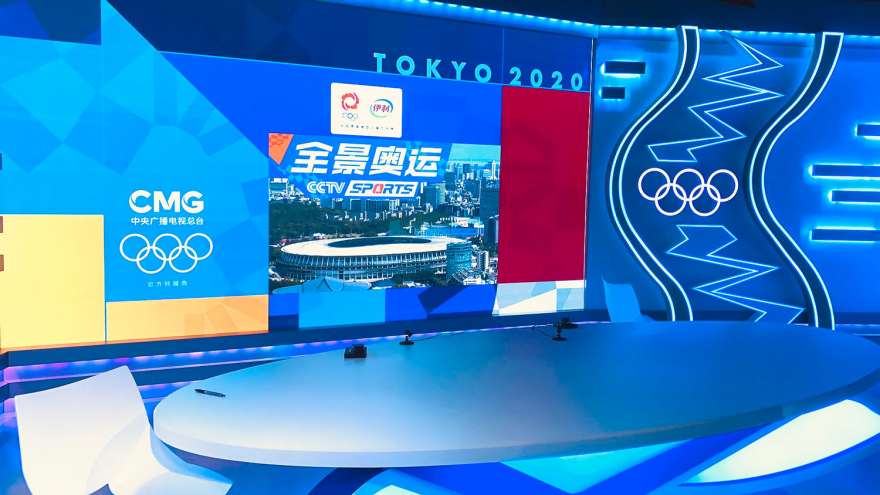
“This is CCTV’s first all-IP-based EFP audio production system for large-scale variety shows,” explains Johnathan Wang, technical director of DMT. “The system should be able to be flexibly set up to adapt to venues and can be quickly deployed in a short time. It also provides very high sound processing capabilities.”

The main console is a 48-fader System T S500m, a mobile version of the System T designed to be 25% lighter with a reduced form factor, which comes complete with flightcases and is suited to EFP applications. With a 16-fader System T S300 as the backup console, the whole system also includes four SB32.24 stageboxes (mic/line input and output), three A16.D16 Dante I/Os, one D64 AES network interface and three MADI-Bridges to provide a wealth of I/O options.
“SSL’s Tempest processing engine has up to 800 channels of audio processing capacity, and 96 effects processing modules, which can meet customers’ needs for sound production of large-scale music variety shows,” continues Wang. “In addition, because System T uses the Dante protocol as its underlying AoIP architecture, it inherits the advantages of Dante, including automatic discovery and recognition and matrix crosspoints. Furthermore, because SSL comes with a lot of audio processing effects, it can greatly reduce the number of external effects and makes the entire EFP audio system more compact.”
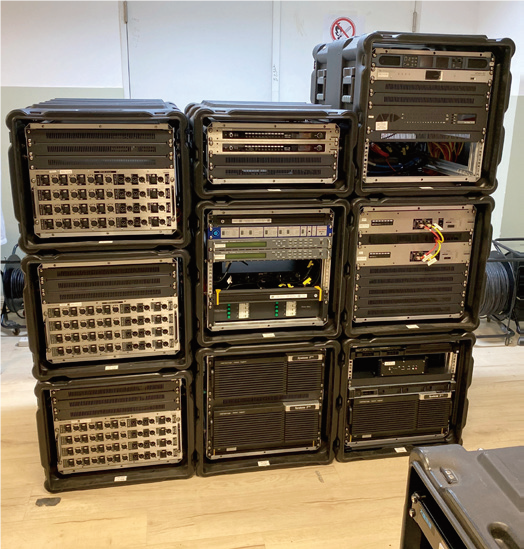
The entire signal transmission of the production system is based on Dante, using two Huawei CloudEngine 6865s as the main core switches. These interact with the video signal source from the 4K/8K video system and the main control system through fibre optic in ST 2110-30 format multicast stream. For traditional audio baseband equipment such as microphones and speakers, the signals are first transmitted to the stagebox and converted into AoIP audio signals, then distributed to the main and backup consoles through a Huawei S5720 switch. All multicast streams across the entire system meet the redundancy requirements of the SMPTE 2022-7 standard, and the system clock adheres to SMPTE 2059-2.
The convenience of operation and production values of Dante meet the strict rapid setup and configuration requirements of the EFP system. The signal interaction between the audio and video systems can be carried out by the main and backup fibre optic cables, which greatly reduces the number of baseband cables and is highly suitable for mobile field work. The system is equipped with Dante Domain Manager (DDM) software to facilitate the signal interaction setting between the audio system and the video/main control system, adapting and adjusting according to each of the other system’s needs. “This centralised control management also deeply impressed our customers because, for such a large-scale audio system, all devices can be managed and operated through just one software interface, which creates a very good user experience,” says Wang. “It is not necessary for them to frequently switch back and forth between various web pages to configure the system.”
In order to meet the standards of 3D sound production, the control room is equipped with a 5.1.4 monitoring system comprising Genelec’s The Ones series, including five 8341A SAM surround speakers, four 8331A SAMs as overheads and one 7360A sub. There is also a pair of 8320A SAMs for stereo nearfield monitoring, while the director’s surround monitoring system consists of five Genelec 8430A SAMs.
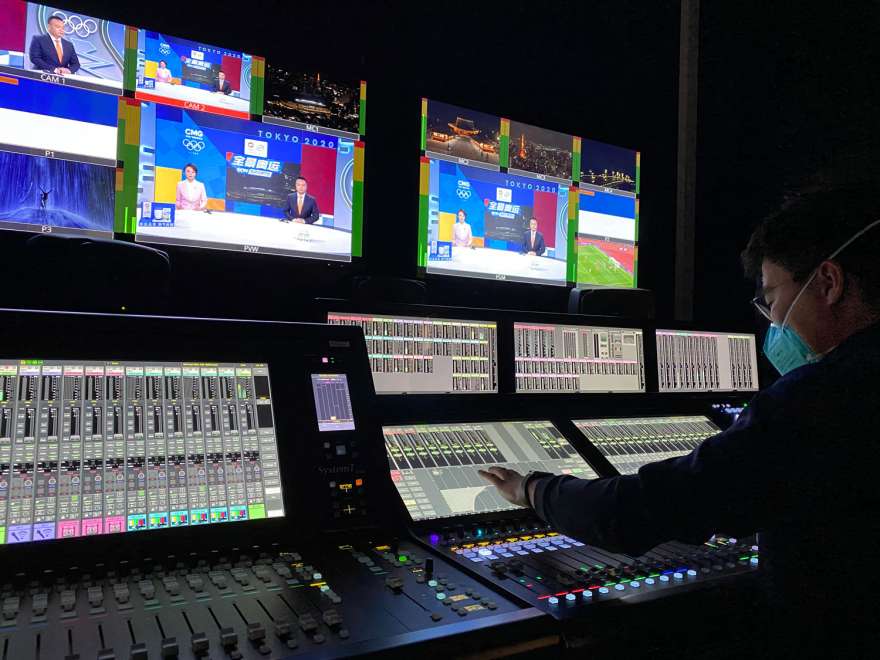
CCTV’s EFP system played an important role in the Tokyo 2020 Olympic Games this summer. Due to the pandemic, the broadcaster cut back on the amount of crew that was sent to cover the games, but the scale of the audio system was increased by 30% compared with the previous Rio 2016 Olympic Games in Brazil. CCTV set up a broadcasting hub in the International Broadcasting Centre (IBC) at the Koto International Exhibition Centre in Tokyo. The entire audio system consisted of three large studio setups and several smaller systems, all of which were using AoIP architecture. One of the three large studios used this EFP system to produce and broadcast talkshows consisting of sports commentary and interviews with athletes. With the help of AoIP technology, the audio team was able to quickly construct a world-class, fully networked audio production system which could share audio signal resources and the maximise multi-regional, cross-border transmission efficiency.
As a member of the audio team at IBC, CCTV engineer Yang Qi feels that EFP systems like this are increasingly relevant to the broadcast industry. “As more and more AoIP audio systems are built, the scale effect of the AoIP system becomes more obvious,” he says. “I think this EFP AoIP audio system can be used as a template. Whether it’s because it can interact with various devices inside the audio system, from the aspect of using software for signal monitoring, management, control or its external signal interaction with other IP systems, all aspects have an exemplary effect. Judging from the use of this system, the number of XLR cables is rapidly reducing. For both the Spring Festival Gala 8K production in 2021 and the 100th anniversary of the Communist Party of China, XLR cables were only used for the monitor speakers at the end stage of the system. I look forward to going out to work without having to bring any baseband cables in the future.”
Yang is clearly looking forward to the widespread adoption of AoIP technology in the broadcast market. “We have been implementing audio systems with AoIP design in mind since 2017,” he says. “With the continuous evolution of protocol technology, I believe that all audio systems of the future will be fully AoIP. That era will come soon.”
